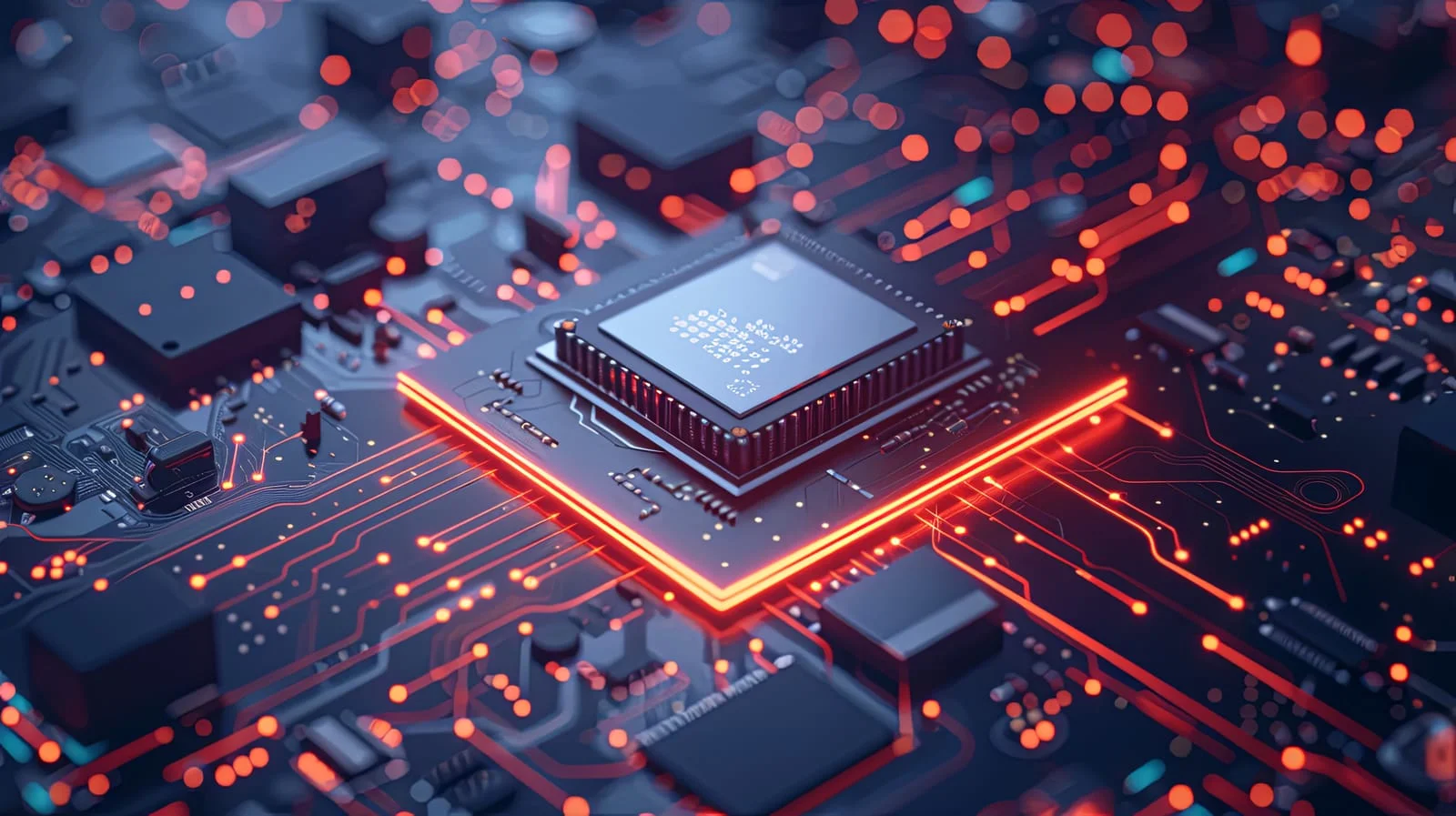Rendering a complex 3D scene on inadequate hardware can turn a three-hour task into a three-day ordeal.
With the 3D modeling and rendering segment projected to experience the highest growth rate among GPU applications, while the overall GPU market expands at 28.6% CAGR through 2032, according to Fortune Business Insights, choosing the right rendering GPU has become a make-or-break decision for development teams, research labs, and technical startups building visual applications.
Whether training generative AI models that create images, running scientific simulations with complex visualizations, or building real-time rendering engines, the GPU powering these workflows directly impacts project velocity and cost efficiency. Understanding which hardware matches specific rendering demands prevents wasted resources and missed deadlines.
Understanding GPU Requirements for Different Rendering Tasks
Not all rendering workloads demand the same GPU capabilities. The best GPU for rendering depends entirely on the specific computational patterns and memory requirements of each workflow type.
Ray tracing and path tracing applications require GPUs with dedicated ray tracing cores and high memory bandwidth. These algorithms trace light paths through scenes, performing millions of intersection tests that benefit from hardware acceleration. Real-time ray tracing demands even more computational power, as frames must render within milliseconds rather than minutes.
Neural rendering and AI-based techniques leverage tensor cores for accelerated matrix operations. Techniques like neural radiance fields (NeRF) and diffusion models perform intensive matrix multiplications during both training and inference. GPUs lacking tensor cores can still execute these workloads, but at significantly reduced speeds.
Scientific visualization often involves rendering volumetric data from simulations or medical imaging. These tasks require substantial VRAM to hold large datasets in memory during rendering passes. A GPU with insufficient memory forces data swapping that drastically slows rendering pipelines.
Batch rendering workflows benefit from GPUs that maximize parallel throughput. Studios rendering animation frames or researchers generating visualization sequences need hardware that maintains consistent performance across extended workloads without thermal throttling.
Key Specifications That Determine Rendering Performance
Identifying a good GPU for rendering requires examining specific technical characteristics that directly impact computational speed and capacity.
CUDA Cores and Stream Processors
The number of parallel processing units determines how many operations execute simultaneously. NVIDIA GPUs use CUDA cores while AMD cards feature stream processors. More cores generally mean faster rendering, though architecture efficiency matters as much as raw count.
Modern high-end GPUs pack thousands of these units. The NVIDIA H100 SXM delivers exceptional parallel processing capability, while the RTX 4090 provides substantial compute power for workloads that don't require data center features.
Memory Capacity and Bandwidth
VRAM capacity limits scene complexity and dataset size. Insufficient memory forces the GPU to swap data with system RAM, creating severe performance bottlenecks. Memory bandwidth determines how quickly the GPU accesses stored data during rendering operations.
Professional rendering often demands:
Minimum 12GB VRAM for standard workflows
24GB or more for complex scenes with high-resolution textures
48GB+ for large-scale simulations or neural rendering training
The H200 offers up to 141GB of HBM3e memory, providing massive capacity for the most demanding computational rendering tasks.
Specialized Acceleration Hardware
Modern GPUs include dedicated hardware for specific operations:
Tensor cores accelerate AI and machine learning workloads by performing mixed-precision matrix operations at speeds far exceeding standard CUDA cores. Any workflow involving neural networks benefits dramatically from tensor core availability.
RT cores (ray tracing cores) provide hardware acceleration for ray-triangle intersection tests and bounding volume hierarchy traversal. Applications using OptiX, DirectX Raytracing, or Vulkan ray tracing extensions leverage these cores for substantial performance gains.

Matching GPU Architecture to Rendering Workflows
Different rendering approaches favor different GPU characteristics, making architecture selection critical for optimal performance.
Rendering Type | Critical Features | Recommended Specs | Memory Needs |
Real-time 3D | High clock speeds, RT cores | RTX 4090, H100 | 16-24GB |
Neural rendering | Tensor cores, memory bandwidth | H100, H200 | 24GB+ |
Scientific visualization | VRAM capacity, double precision | H100, H200 | 48GB+ |
Batch production rendering | Parallel throughput, stability | H100, RTX 4090 | 24-48GB |
For AI-driven rendering workflows, tensor core count becomes paramount. Training diffusion models or neural radiance fields involves countless matrix multiplications where tensor cores provide 10-20x acceleration compared to standard compute units. The H100 excels in these scenarios with its advanced tensor core architecture.
For traditional ray tracing, RT core availability and count directly impact render speeds. Production renderers like V-Ray, Arnold, and Cycles benefit from hardware ray tracing acceleration, though implementation quality varies across rendering engines.
For hybrid workflows combining multiple rendering techniques, balanced specifications matter more than specialization. A GPU for rendering needs sufficient CUDA cores for general compute, tensor cores for AI operations, and adequate memory for complex scenes.
Evaluating Performance Beyond Raw Specifications
Benchmark numbers and spec sheets don't always translate to real-world rendering performance. Several practical factors influence actual workflow efficiency.
Thermal Management and Sustained Performance
GPUs throttle performance when temperatures exceed safe operating ranges. Data center GPUs like the H100 SXM feature advanced cooling solutions that maintain peak performance during extended rendering jobs. Consumer cards may throttle during multi-hour renders, reducing effective throughput.
Software Optimization and Driver Support
Rendering applications optimize differently for various GPU architectures. Some rendering engines perform better on NVIDIA hardware due to CUDA optimization, while others support multiple backends with comparable performance. Checking rendering software documentation reveals which GPUs receive the best optimization.
Multi-GPU Scaling Efficiency
Many rendering workflows scale across multiple GPUs, though efficiency varies. Some applications achieve near-linear scaling with additional GPUs, while others see diminishing returns. Understanding scaling behavior prevents overinvestment in GPU quantity when a single, more powerful unit would perform better.
Cloud GPU Infrastructure vs On-Premise Hardware
The decision between owning hardware and leveraging cloud GPU services significantly impacts both flexibility and total cost for rendering workloads.
Advantages of Cloud-Based Rendering
Cloud platforms eliminate capital expenditure on depreciating hardware. Teams can access the latest GPU technology without managing procurement, installation, and maintenance. Scaling computational capacity matches project demands, bursts to dozens of GPUs during crunch periods, then scales down during quieter phases.
Platforms offering GPU access, such as services providing H100 SXM, H200, RTX 4090, and RTX 3080 configurations, enable teams to select appropriate hardware for each specific rendering task. Different workloads run on different GPU types without maintaining a diverse hardware inventory.
When On-Premise Makes Sense
Organizations with consistent, heavy rendering loads may find on-premise hardware more economical long-term. Regulatory requirements around data sovereignty sometimes mandate local processing. Research institutions often require physical hardware for specific experiments or long-term reproducibility.
Hybrid approaches combine both models, maintaining baseline infrastructure locally while leveraging cloud resources for peak demands or specialized hardware access.

Cost-Effective GPU Selection Strategies
Choosing the best GPU for rendering involves balancing performance requirements against budget realities through strategic hardware selection.
Match GPU tier to workload criticality. Development and testing workloads rarely require flagship GPUs. Reserve high-end hardware like the H100 for production rendering, training runs, or time-sensitive deliverables. Use mid-tier options like RTX 3080 for iterative development work where render time matters less than rapid iteration.
Consider the total cost of ownership beyond the purchase price. Power consumption, cooling requirements, and depreciation factor into long-term costs. A more efficient GPU may cost more initially but save substantially over its operational lifetime through reduced power bills and longer useful life.
Evaluate rendering software licensing models. Some rendering engines charge per GPU or per CUDA core. Understanding licensing costs prevents situations where GPU hardware proves affordable but software licensing becomes prohibitively expensive.
Plan for future scalability. Rendering demands typically grow as projects mature. Selecting GPUs with headroom prevents premature obsolescence. Cloud infrastructure naturally scales without replacement concerns.
Making the Final GPU Decision
Selecting the optimal rendering GPU requires matching specific technical requirements to available hardware options through systematic evaluation.
Start by profiling current rendering workloads to identify bottlenecks. Monitor GPU utilization, memory usage, and rendering times across representative tasks. These metrics reveal whether additional compute power, more memory, or specialized acceleration features would provide the most benefit.
Consider these practical evaluation steps:
Test rendering applications with different GPU configurations using cloud instances before committing to hardware purchases
Benchmark specific workflows rather than relying on synthetic benchmarks that may not reflect actual use patterns
Evaluate whether rendering software takes full advantage of available GPU features like tensor cores or RT cores
Calculate break-even points comparing cloud costs to owned hardware over projected usage periods
The best GPU for rendering balances performance requirements, budget constraints, and workflow specifics. Research teams performing scientific visualization need different hardware than studios rendering animation frames or developers training neural rendering models.
For teams requiring flexibility across varied rendering workloads, cloud GPU infrastructure provides access to specialized hardware without capital investment or long-term commitment. Platforms offering diverse configurations from workstation-class RTX cards to data center accelerators like the H100 and H200 enable matching specific GPU capabilities to each rendering task without maintaining extensive hardware inventory.
Rendering workflows continue evolving as new techniques emerge. Choosing GPU infrastructure that adapts to changing requirements—whether through cloud flexibility or strategic hardware planning—ensures rendering pipelines remain efficient as projects and technologies advance.
About Hyperbolic
Hyperbolic is the on-demand AI cloud made for developers. We provide fast, affordable access to compute, inference, and AI services. Over 195,000 developers use Hyperbolic to train, fine-tune, and deploy models at scale.
Our platform has quickly become a favorite among AI researchers, including those like Andrej Karpathy. We collaborate with teams at Hugging Face, Vercel, Quora, Chatbot Arena, LMSYS, OpenRouter, Black Forest Labs, Stanford, Berkeley, and beyond.
Founded by AI researchers from UC Berkeley and the University of Washington, Hyperbolic is built for the next wave of AI innovation—open, accessible, and developer-first.
Website | X | Discord | LinkedIn | YouTube | GitHub | Documentation
:format(webp))
:format(webp))
:format(webp))
:format(webp))
:format(webp))
:format(webp))
:format(webp))
:format(webp))
:format(webp))
:format(webp))
:format(webp))
:format(webp))
:format(webp))
:format(webp))
:format(webp))
:format(webp))
:format(webp))
:format(webp))
:format(webp))
:format(webp))
:format(webp))
:format(webp))
:format(webp))
:format(webp))
:format(webp))
:format(webp))